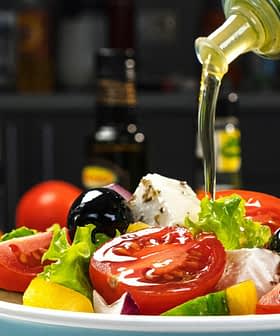Spain Deploys New Technology to Combat Olive Tree Pathogens

Spain’s Agrifood Industrial Technology Center (Ainia) is developing a series of new detection methods to help olive farmers identify and stem the spread of common pathogens before their symptoms are manifested.
Using hyperspectral and thermal remote sensing, Ainia and its research partners will help identify olive trees infected by Xylella fastidiosa and verticillium, a fungus that attacks the roots of the olive tree and causes its leaves to wilt.
This modernization of cultivation practices will affect the entire olive value chain: from the farmer, through the transformer of the olive oil industry or table olives, to the final consumer.
Both Xylella and verticillium have been spreading in Spain in recent years. According to new research published in the Proceedings of the National Academy of Sciences (PNAS), if left unchecked, Xylella fastidiosa alone could cost the Spanish olive oil producers up to €17 billion ($18.4 billion) over the next half-century.
Using traditional methods, it is currently not possible to detect the early onset of these two diseases in the olive groves. Officials at Ainia hope that the new detection methods they are working to develop will allow outbreaks to be caught earlier on.
See Also:More on Xylella Fastidiosa“Diseases that threaten the olive tree are one of the main concerns of farmers; especially those that, due to their virulence, such as Xylella fastidiosa or verticilliosis, can destroy hectares of olive groves in a few years,” Ana Torrejón, a biotechnology researcher at Ainia, said.
“Our objective is to develop an integrated strategy that allows us to respond to the olive oil production and olive oil sector in the fight against these olive diseases, so that an industry of great importance in our country can continue to progress,” she added.
The researchers plan to use drones to conduct the hyperspectral and thermal remote sensing. These drones would fly over the groves and create three-dimensional maps of the olive trees, detecting wavelengths of light that cannot be perceived by the human eye.
These same wavelengths, however, can give researchers information about the health of the olive trees and provide them with a window of opportunity to detect the onset of the disease before the symptoms have been physically manifested.
Along with testing new detection methods, Ainia is also working to develop new biocontrol measures and biostimulants.
Once fully developed and tested, the researchers believe that the biocontrol measures would present a sustainable and organic alternative for farmers who want to avoid using pesticide regimes to prevent the spread of the insects that serve as the main vectors for the two diseases.
Researchers also hope to be able to develop biostimulants that could be applied to olive trees and help increase their resistance to environmental stressors, such as pests, which make them more vulnerable to the disease.
When asked what types of biocontrol measures and biostimulants were being tested, Ainia declined to comment and said they preferred to wait for concrete results before discussing the type and effectiveness of their measures.
However, the researchers emphasized that anything they could learn from these detection and prevention trials would help stakeholders throughout the olive sector in the long run.
“This modernization of cultivation practices will affect the entire olive value chain: from the farmer, through the transformer of the olive oil industry or table olives, to the final consumer; that they will be able to access products produced in a sustainable way, free of chemical phytosanitary products,” Joaquín Espí, a technician from the Ainia biotechnology department, said.

 Apr. 17, 2020 11:13 UTC
Apr. 17, 2020 11:13 UTC Daniel Dawson
Daniel Dawson






